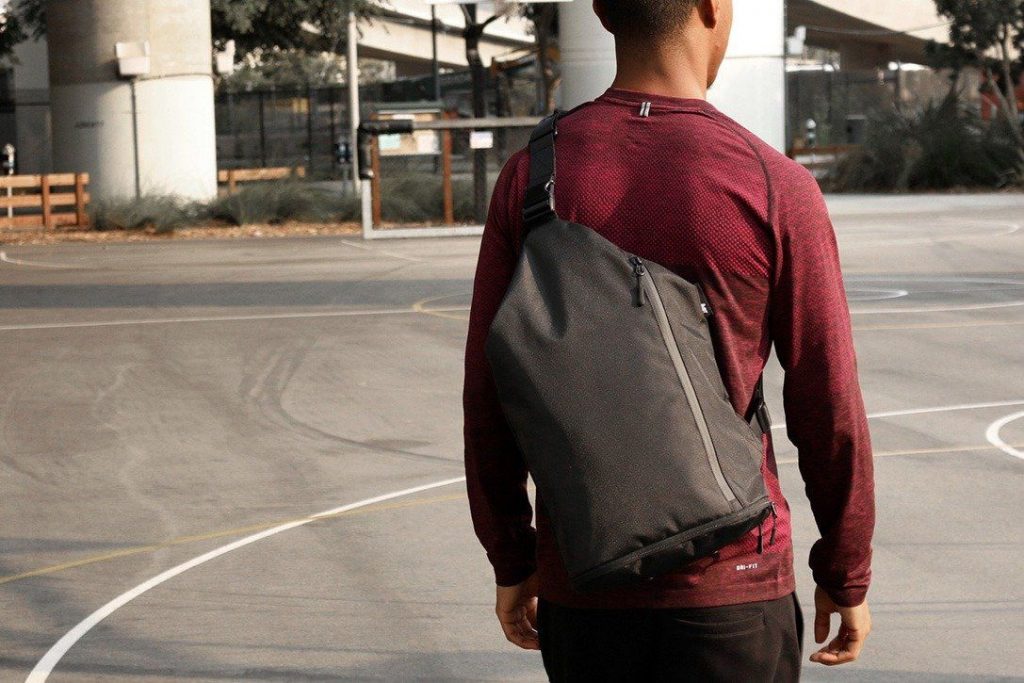Most people who own a sling backpack or a sling bag want to benefit from the fact that they’re portable, compact, light, and obviously because they can be worn in any number of ways. However, which of these ways are actually ‘proper’?
There are no ‘right’ ways to wear a sling bag, mainly because there are so many different models and just as many different situations in which you’re going to use them. The way you’ll wear a sling backpack also depends on ‘where’ you are going to use it (in a crowded metro, while commuting, in a car, etc), your bag’s size, which items are you going to pack it with, and so on.
Today we are going to talk to you about different ways and different benefits of wearing a sling backpack, so without any further ado, let’s dive straight into it.
How to wear a sling backpack?
There are a couple of things you should keep in mind before deciding how you are going to wear your sling backpack, which we’ll talk about at length in the sections below, but in a nutshell, you’ll want to balance your bag’s ergonomics, security, ease of access, and comfort.
Comfort and ergonomics
Depending on which position you are wearing your sling backpack in you will, obviously, ‘feel it’ a bit differently. Of course, there are numerous factors that affect the overall comfort rating of a sling bag, but let’s just focus on the wearing position for the time being.
Most people intuitively carry bags and backpacks on their back (hence the name), but that’s actually not the most ergonomic and comfortable position in this case. Namely, sling bags and backpacks feature only one strap, which basically means that only one of your shoulders will suffer the stress and strain. In fact, this might be the least comfortable position to carry a sling bag in.
On the opposite end we have the ‘front carry’ position. Although it might seem a bit counter-intuitive, it provides more benefits in comparison to carrying your sling bag on your back (easier to access the items, improved security), but at the end of the day, the one-sided strain put on your shoulder makes it equally uncomfortable.
Similar to the ‘front carry’ is the situation where you would carry your sling bag closer to your chest. Generally speaking, you’ll greatly reduce the shoulder tension this way, as you will distribute the weight from your upper back to your lower back. However, this doesn’t completely resolve the issue of discomfort – you’ll simply trade shoulder and neck pain for lower back pain.
Comfort-wise, the best carrying position is at the waist. Granted, you might put a bit of strain on your lower back and knees this way, but due to the light weight of the sling bag (and its small capacity), this stress is easier to withstand and endure.
Security

Sling bags are generally small, and because of it they’re easier to ‘snatch’ from unsuspecting victims. Let’s briefly talk about how much security each position offers.
Carrying your sling bag on your back is the least secure position due to obvious reasons. You won’t see the thief coming, so you’re likely to get hit by surprise. The straps on sling bags are usually thin and weak, which makes them easy targets, even for bare-handed robbers. Every other position is safer.
You’ll have a better chance reacting if your sling bag is at your waist. It will be hidden from plain sight in most cases, and most petty thieves wouldn’t risk trying to grab it. Having your bag in such an inconspicuous location paired with the benefits of comfort and ergonomics means that this is probably your best option overall. Roughly speaking, the only ‘bad and insecure’ position is the back carry position.
Ease of access
How easy you can access the contents of your bag is not of vital importance, and it’s certainly not as important as how comfortable the bag is, and how secure the carrying position is. However, if you’re searching for the optimal carrying position, you might want to take this into account as well.
Again, the worst carrying position in terms of easy access is the back carrying position. In most cases you won’t be able to twist your arms in such an angle to reach the zippers, which means that you’ll have to take the bag off your shoulder and put it in front of you, which might present inconveniences if you need to grab something quickly.
Carrying your back in front of you (regardless of the position) is always better. The position where you could access your bag’s contents in the most intuitive way is the waist carrying position, but both ‘loose carry’ and ‘front carry’ positions are perfectly fine too.
Frequently Asked Questions
Are there different ways of carrying a sling backpack?
There are four general ways of carrying a sling backpack, including carrying it on your back, carrying it up front, carrying it loose, and carrying it on your waist. Each position offers different benefits and presents different problems.
Are sling backpacks easier to use than regular backpacks?
By all means, yes, sling backpacks are easier to use than typical, average backpacks. They’re smaller, lighter, and much easier to handle, regardless of the model in question.
Which carrying position offers the best (and most) benefits?
Even though each position has its pros and cons, the optimal sling bag carrying position is the waist carrying position. It puts the least amount of stress on the joints, knees, and the lower back while offering security and ease of access at the same time.
Are sling backpacks large enough to accommodate larger items such as laptops?
Generally speaking, sling bags aren’t that much smaller from regular backpacks. They’re more compact and offer less space, but you could easily fit a standard 13-inch laptop in one while still having enough room for a couple of smaller items.
Leave a Reply